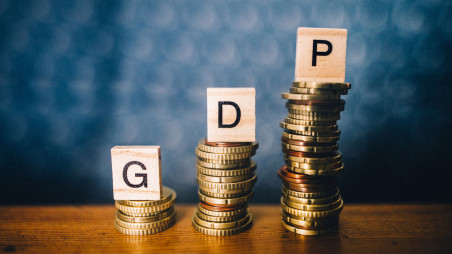Bilal9
ELITE MEMBER

- Joined
- Feb 4, 2014
- Messages
- 26,569
- Reaction score
- 9
- Country
- Location
The economic recovery was supported by robust domestic demand and declining fuel and food prices, according to the Asian Development Outlook (ADO) July 2023, released on Wednesday (19 July). The development partner also attributed Bangladesh’s higher estimate of 6.0% for FY2023, which ended on 30 June, to strong net exports and supportive policies.
Representational Image
Representational Image
The Asian Development Bank (ADB) has kept the growth forecast for Bangladesh's gross domestic product (GDP) unchanged at 6.5% for the current fiscal year.
In its April report for the Asian Development Outlook (ADO) report 2023, ADP said the current growth rate in Bangladesh is estimated higher than forecast for fiscal 2023.
The economic recovery was supported by robust domestic demand and declining fuel and food prices, according to the Asian Development Outlook (ADO) July 2023, released on Wednesday (19 July).
The development partner also attributed Bangladesh's higher estimate of 6.0% for FY2023, which ended on 30 June, to strong net exports and supportive policies.
"In Bangladesh, imports fell more sharply than expected and export growth slowed less than expected. On the supply side, manufacturing firms of all sizes leveraged supportive government policies to contribute to growth," the report said.
According to ADB, crop losses to floods, cyclones, and droughts here were partly offset by subsidies, incentives, and other measures.
Meanwhile, the service sector in the country was buoyed by higher warehouse and support activities and health and social services.
On the demand side, growth in public consumption and investment outpaced expectations, the report added.
The ADB released the update of the Asian Development Outlook from its headquarters in Manila highlighting the economic growth in developing Asia and the Pacific, amid mounting challenges, including increased monetary tightening, fallout from the protracted Russian invasion of Ukraine, and recurrent Covid-19 lockdowns in China.
The ADB maintained the growth projection for the region in the current fiscal year at 4.8%, as robust domestic demand continues to support the region's recovery. The region's growth forecast for next year is marginally revised down to 4.7% from a 4.8% estimate in April.
The development bank expects that inflation in the region will fall further in the coming days, approaching pre-pandemic levels as fuel and food prices decline globally. It lowered the inflation forecast to 3.6% this year, compared with an April forecast of 4.2%. The inflation outlook for 2024, meanwhile, is raised to 3.4% from an earlier estimate of 3.3%.
ADB Chief Economist Albert Park said, "Asia and the Pacific continue to recover from the pandemic at a steady pace. Domestic demand and service activity are driving growth, while many economies are also benefiting from a strong recovery in tourism.
"However, industrial activity and exports remain weak, and the outlook for global growth and demand next year has worsened."
The report projected growth for the South Asia region at 5.5% in 2023 and 6.1% in 2024 given balancing developments.
"South Asia is on course to achieve ADO April 2023 growth forecasts where downward revisions for Nepal and Pakistan in 2023 were offset by an upward revision for Bangladesh as net exports performed better than expected.
"Growth projections elsewhere in South Asia are largely maintained," the report said.
The 2024 inflation forecast for South Asia, which was kept at 8.1% for 2023, has been revised up markedly to 6.4%.
In India, the inflation projection is reduced slightly from 5.0% in ADO April 2023 to 4.9% and maintained at 4.5% in FY2024 as food and oil prices moderated, and inflation eased below the 6.0% upper bound of the monetary policy target. While the expected softening of Brent crude prices in 2023 should lower headline inflation, core inflation, which excludes food and fuel, is expected to be stubbornly high.
The Bhutan inflation projection for 2023 was revised down after fuel prices dropped more than expected. Similarly, the inflation forecast for Sri Lanka was revised down on account of declining prices for food, transportation, and utilities, as well as base changes for the consumer price index.
In contrast, 2023 inflation projections for Bangladesh and Nepal were revised up, and actual inflation in Pakistan in FY2023 was higher than projected, leaving the sub-regional forecast unchanged.
Continued demand-side pressures in Pakistan play an outsized role in the upward revision to the sub-regional inflation forecast for 2024, the report explained.






